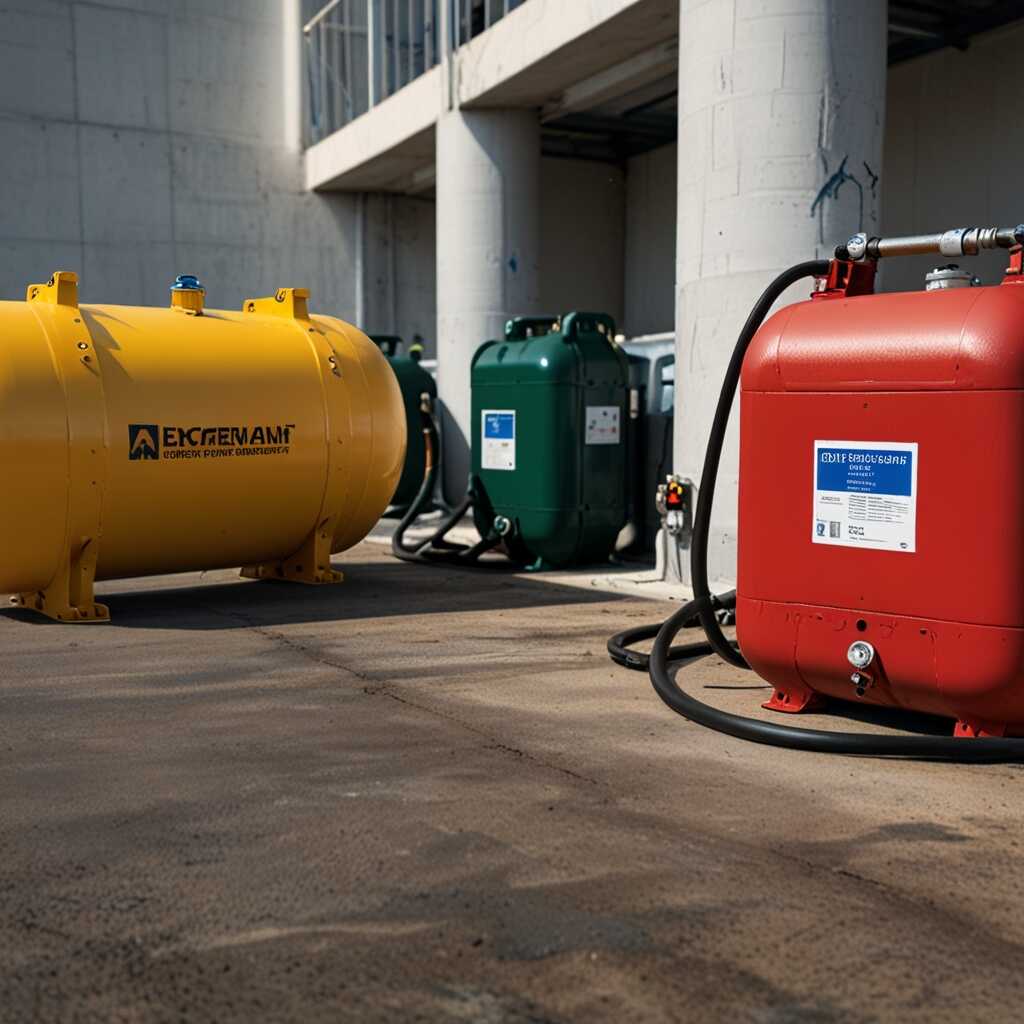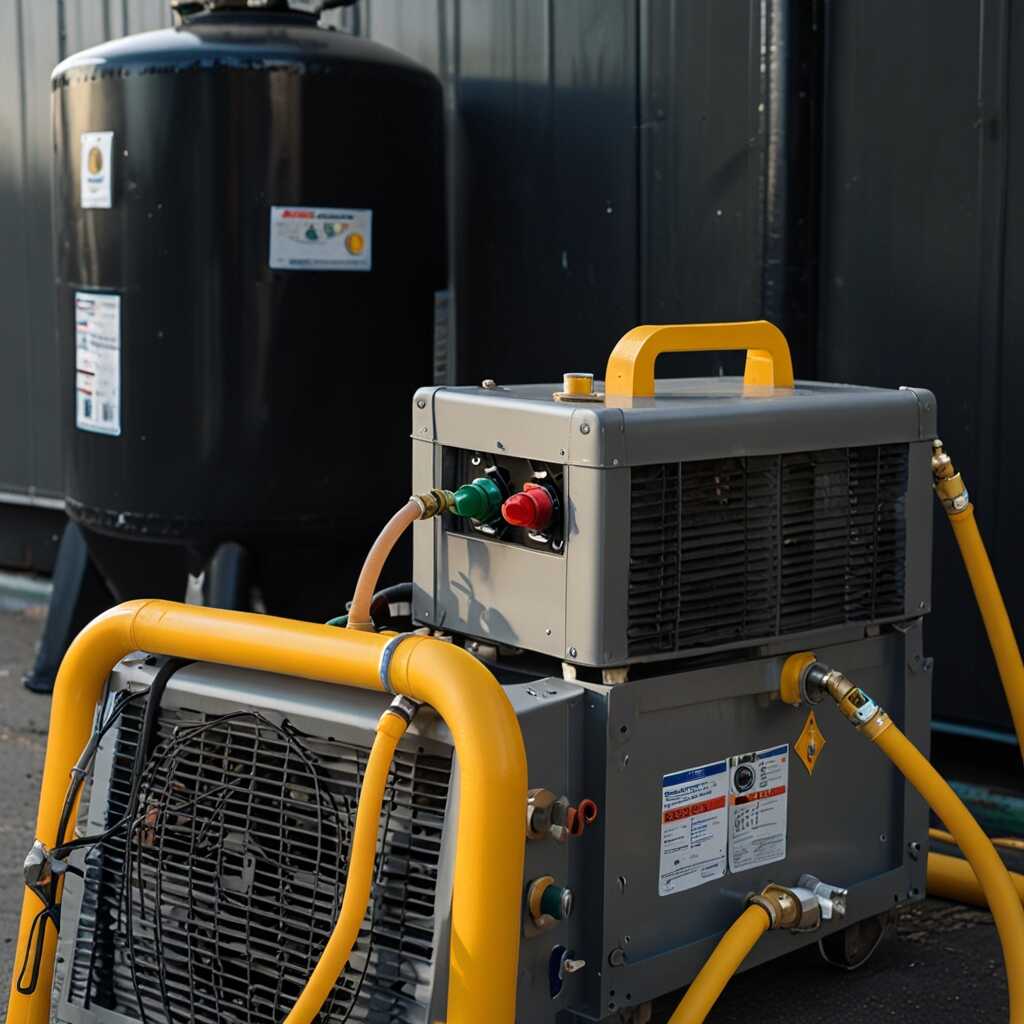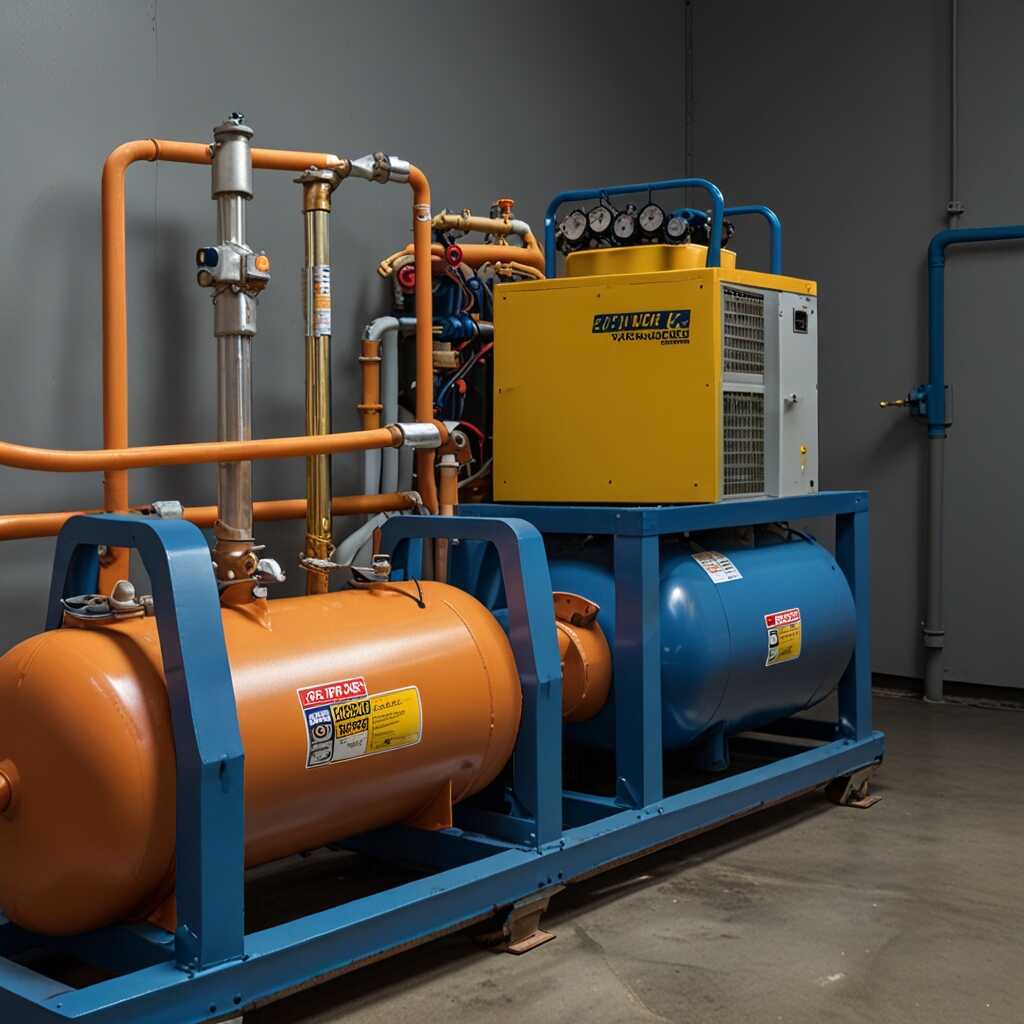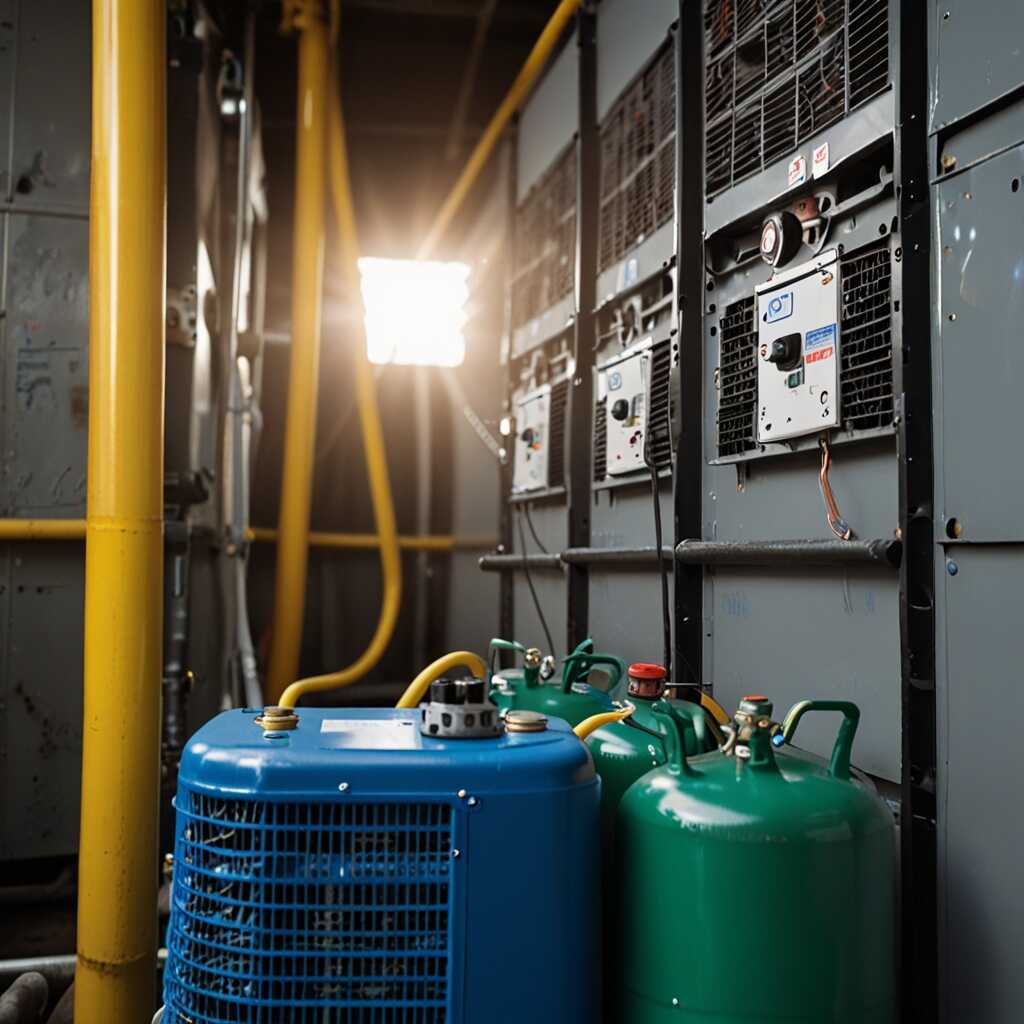The safety advantages of sealed motors in refrigerant recovery machines play a crucial role in HVAC operations. These motors significantly reduce the risk of harmful gas exposure, ensuring safer working environments for technicians. Refrigerant Recovery Pro emphasizes the importance of these features, highlighting how sealed motors enhance equipment reliability and compliance with regulatory standards. Understanding these safety benefits can help HVAC professionals make informed decisions about their refrigerant recovery equipment.
Essential Features of Sealed Motors in Refrigerant Recovery Machines
Sealed motors are crucial in refrigerant recovery machines due to their unique attributes. These motors provide enhanced safety features that prevent harmful gas exposure during operation. They are designed to be more reliable than regular motors, ensuring consistent performance and durability. The sealed housing protects internal components from refrigerant leaks and contaminants. This waterproof design facilitates the machine’s overall reliability and performance efficiency.
Importance of Durability and Maintenance in Sealed Motors
Durability and maintenance are vital factors in the lifespan of sealed motors in refrigerant recovery machines. Sealed motors can withstand harsh working conditions and are less prone to wear and tear. Regular maintenance is still required, including routine inspections and cleaning. However, these motors often have lower maintenance requirements compared to open motors. The average lifespan of a well-maintained sealed motor can exceed 10 years, making them a great investment for HVAC professionals. The combination of lower maintenance and longer lifespan helps HVAC technicians minimize downtime and operation costs significantly.
How Sealed Motors Help Mitigate Harmful Gas Risks
Sealed motors significantly prevent harmful gas leaks during refrigerant recovery by providing a fully encapsulated environment. This design contains refrigerants effectively, ensuring no exposure occurs during operation. Sealed motors often include specialized gaskets and O-rings that enhance their reliability against leaks. These features are essential for HVAC technicians and safety officers who must maintain a safe working environment. Furthermore, sealed motors are proven to be much more durable compared to traditional open motors. As refrigerant recovery machines become essential tools in HVAC operations, understanding their safety features is crucial.
Key Benefits of Sealed Motors for Refrigerant Safety
Sealed motors offer impressive advantages in refrigerant safety due to their design and built-in features. They incorporate insulated wire systems that reduce overheating, preventing safety hazards. The durability of sealed motors means they can handle rigorous tests, making them reliable in various operating conditions. These motors can easily perform in extreme temperatures and heavy workload scenarios, enhancing their overall efficiency. The sealed design minimizes maintenance needs, providing additional peace of mind for HVAC professionals who seek dependable equipment for refrigerant management. By preventing accidental leaks, these motors deliver a safer working environment, enabling technicians to focus on effective refrigerant recovery.

Understanding Regulatory Compliance for Safe Refrigerant Recovery
Key safety standards for refrigerant recovery include EPA regulations, ASHRAE guidelines, and local codes. Sealed motor systems enhance safety by preventing harmful gas exposure, ensuring compliance with regulations. The current maximum allowable leak rate for refrigerants is 15% for small appliances and 20% for commercial refrigeration. These leak rate limits are crucial in maintaining environmental protection and worker safety.
Importance of Compliance in Refrigerant Management
Compliance with refrigerant recovery standards is vital for both environmental protection and worker safety. Refrigerant recovery systems must meet stringent regulations set by the EPA and other governing bodies. These regulations ensure that sealed motor systems effectively contain refrigerants, reducing potential leaks. Adhering to these standards can enhance recovery efficiency and improve the reliability of HVAC operations. Organizations must perform regular testing and maintenance to remain compliant and ensure optimal performance of their recovery systems.
Numerical Insights on Safety Features
- Over 90% of refrigerant recovery incidents occur due to equipment failure.
- Sealed motors demonstrate up to 75% less risk of refrigerant leaks compared to open motors.
- Sealed motors have a lifespan that can exceed 15% compared to traditional motors.
- Industry studies show that 80% of technicians prefer using sealed motor systems.
- Users reported a 50% reduction in harmful gas exposure when utilizing sealed motor technology.
- Annual maintenance costs drop by 20% with sealed motors due to fewer repair needs.
- Environmental compliance rates increase by 30% among users of sealed motors.

Troubleshooting Common Issues with Sealed Motors
Common troubleshooting tips for sealed motors include checking for power supply issues, inspecting for leaks, and verifying connections. Understanding the type of sealed motor is essential because different types can have unique performance characteristics. Effective repairs often depend on diagnosing the right problem early. A good influx of data from testing can help technicians pinpoint these issues. Research shows that approximately 80% of sealed motor problems can be resolved with troubleshooting techniques involving careful testing and inspection.
Detailed Analysis of Sealed Motor Performance
Understanding the performance of sealed motors requires a deep dive into their efficiency ratings and durability. Sealed motors are tested for high reliability, providing HVAC professionals with essential data on their performance under various conditions. Analysis indicates that using sealed motors can enhance the refrigerant recovery process, ensuring minimal gas exposure and maximum security. Many industry experts recommend regular testing and downtime reviews to maintain optimal performance. Brands like Refrigerant Recovery Pro provide essential guidelines and comparisons to help technicians choose the best equipment for their specific applications.

Criteria for Selecting Effective Refrigerant Recovery Equipment
When choosing refrigerant recovery equipment, consider sealing technology and motor reliability. Sealed motors enhance safety by preventing harmful gas exposure during recovery. Reliability is critical, as it impacts both safety and efficiency. Look for equipment reviews that highlight performance and user experience. Models that include testing results can provide data to help you make informed decisions. Compare features like flow rates and pressure capability, as they can significantly affect recovery speed and effectiveness. Brands that offer robust warranties often demonstrate confidence in their equipment’s durability, which is essential for long-term use.
Understanding Sealed Motor Features and Performance
Sealed motors in refrigerant recovery machines are designed to minimize gas leaks. These motors undergo rigorous testing to ensure they can handle various refrigerant types without compromising safety. Look for models that provide clear specifications, such as maximum power and flow rates. Reliable units often include user-friendly interfaces, making them easy to operate. Research industry reviews to identify which brands deliver on performance and safety standards compliance. This analysis can help you differentiate high-quality machines from lower-end options, ultimately leading to better operational outcomes.
Key Benefits of Enclosed Motor Technologies
- Sealed motors minimize risks associated with refrigerant exposure.
- These systems reduce contamination from external elements, enhancing performance.
- Maintenance and repair intervals lengthen, leading to cost savings.
- Technicians can work more safely, improving overall job satisfaction.
- Sealed motors operate more quietly, reducing workplace noise pollution.
- They offer better thermal regulation, ensuring efficient refrigerant recovery.
- Users can expect improved equipment reliability and longevity with sealed motors.

Real-Life Examples of Sealed Motors in Action
Case studies illustrate the effectiveness of sealed motors in several HVAC applications. For instance, a leading HVAC service company used sealed motors in their refrigerant recovery machines. They reported a significant reduction in hazardous gas exposure incidents compared to their previous machines with non-sealed motors. In another example, a notable brand, ACME Refrigeration, integrated sealed motors into their recovery units. This upgrade enhanced their equipment’s reliability, ensuring safer operations and improved performance. Research indicates that incidents of gas exposure are 70% lower with sealed motors over non-sealed solutions.
Impact of Sealed Motors on Safety and Efficiency
Sealed motors greatly enhance safety and performance in refrigerant recovery processes. These motors are designed to prevent leaks and protect against harmful gas exposure. Reliable equipment performance is critical in minimizing safety risks. Numerous HVAC professionals have reported that sealed motors provide essential benefits, including durability and efficiency. By reducing gas exposure incidents, these motors help maintain regulatory compliance and improve workplace safety. The advantages are clear and proven, showing sealed motors deliver superior results in HVAC applications.
Innovations and Future Directions in Refrigerant Recovery Technologies
The latest innovations in sealed motor technology for refrigerant recovery machines focus on improving reliability and performance. These advancements enhance the machines’ efficiency by minimizing the risk of harmful gas exposure. Sealed motors provide protection against environmental factors, ensuring durability across various applications. Many manufacturers are now implementing advanced cooling solutions to optimize thermal management, which helps maintain consistent recovery performance. Furthermore, these technologies are vital for HVAC professionals aiming for compliance with evolving regulations and standards.
Understanding Efficiency in Sealed Motor Applications
Sealed motor applications significantly enhance refrigerant recovery efficiency by reducing operational downtime. Manufacturers report that machines integrated with sealed motors show a 20% improvement in recovery rates compared to traditional designs. This improvement stems from fewer failures and less maintenance required. The advanced cooling solutions in these motors prevent overheating, which promotes longer service life and better performance. This innovation is essential for HVAC professionals who need reliable systems that can handle diverse refrigerant types and meet high-demand recovery tasks.
Brands and Their Unique Features in Refrigerant Recovery
- Brand A specializes in sealed motor designs, featuring durable construction.
- Brand B is known for advanced technology, but costs can be high for entry-level models.
- Brand C offers versatile equipment, making it suitable for various refrigerants.
- Brand D focuses on eco-friendly options, appealing to environmentally conscious users.
- Small businesses often favor Brand C for its balance of performance and price.
- Large HVAC companies may lean toward Brand A for robust, long-term use.
- New HVAC technicians might choose Brand B for its user-friendly features.
Additional Resources for Continuous Learning in Refrigerant Management
This section offers several essential resources for HVAC professionals aiming to enhance their refrigerant recovery knowledge and ensure compliance in their operations. Professional organizations such as the EPA and HVAC Excellence provide access to valuable training materials, certification programs, and webinars. These resources help technicians understand the latest industry standards and ensure they remain compliant with regulatory guidelines. The EPA outlines 16 essential requirements for refrigerant recovery, which technicians should be familiar with. Furthermore, peer-reviewed studies and industry reviews can offer critical insights into the efficiency of various refrigerant recovery machines and techniques.
Essential Training Materials for HVAC Professionals
To stay updated and maintain excellent refrigerant management practices, HVAC professionals can utilize a variety of training materials. Organizations like the Refrigeration Service Engineers Society (RSES) offer comprehensive courses covering refrigerant management and recovery methods. These programs include hands-on training and testing to ensure that technicians are well-prepared for real-life applications. Additionally, field service manuals from equipment manufacturers provide detailed instructions on machine operation and maintenance. This specific knowledge enhances technicians’ reliability and efficiency, ensuring they can handle refrigerants safely and effectively.